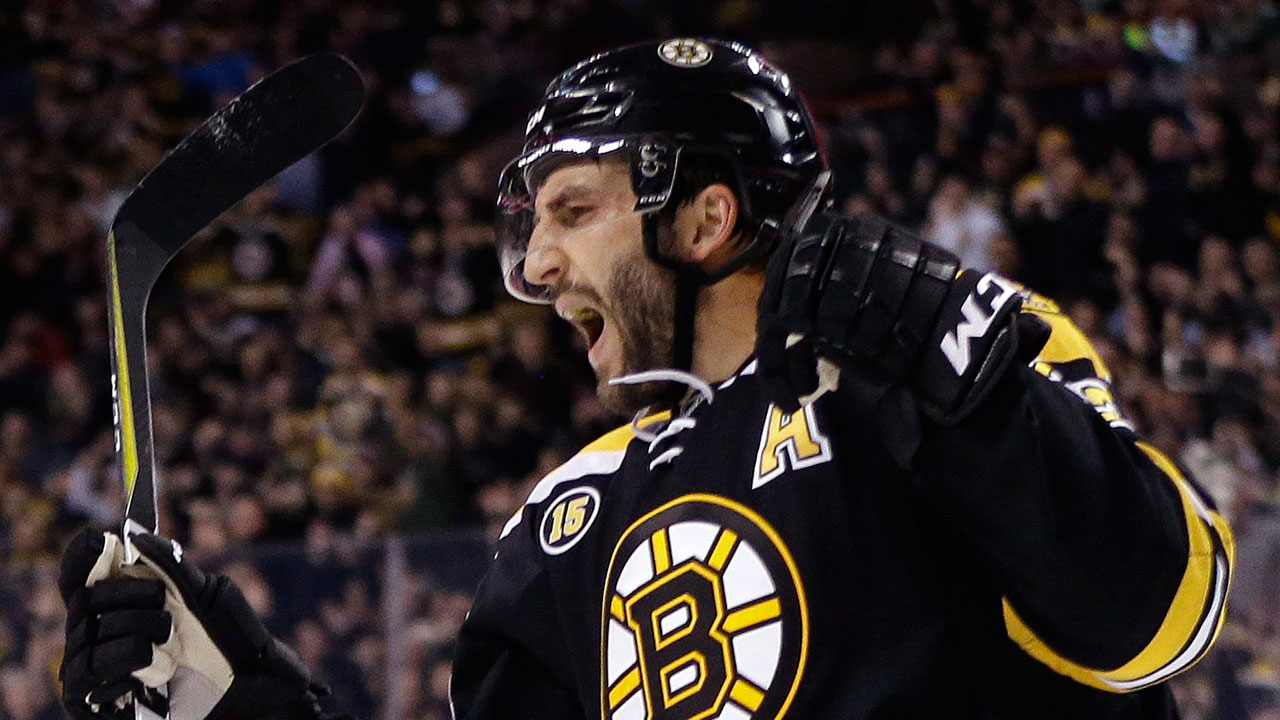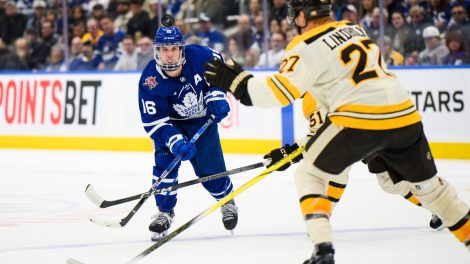For those who don’t eat, sleep and breathe fantasy hockey the annual draft can be a daunting experience. Everyone can use a little help. Maybe you picked up a draft guide from the local supermarket or ordered one online (the DobberHockey Guide is available for download for just $9.99) or perhaps you simply printed off a list of last year’s top scorers. For an extra leg up, the DobberHockey gang is back to offer some tips to help you pick the best fantasy hockey team possible. This week, we’ll look at four key stats to look at in preparation for your fantasy hockey drafts.
1. Power Play Time On Ice
The most potent time for NHL offence comes on the power play. Intuitively, this makes sense. Teams scored on 19.1 per cent of their power plays in 2016-17 and they are getting better every year. Just over 20 per cent of all goals scored in the NHL last season were scored on the power play.
If a player doesn’t see significant power play time, it limits their ceiling as a fantasy producer. Only 18 players scored 50 points or more at even strength last season, a good indication that it is next to impossible to produce fantasy relevant numbers without some sort of role on the power play.
A rare exception might be Brandon Saad, who scored 50 of his 53 points at evens, but he’ll never reach his upside without a jump in power play usage. His career high for power play time on ice per game is 2:11.
On the flip side, it is no surprise that Brad Marchand’s evolution into an MVP candidate involved a three-year incline in power play time from 0:59 per game in 2014-15 to 2:42 per game last season. There is no chance he sniffs the 80-point plateau without the 24 power play points he registered last season.
Power play time is especially important for fantasy defencemen. Only 14 defencemen produced 30 or more points at even strength last season. Of the 44 who scored 35 overall points or more, only five of them (Seth Jones, Matt Niskanen, Jared Spurgeon, Brady Skjei, Alex Goligoski) produced fewer than 10 power play points. Of those five, only Skjei saw fewer than 1:30 of power play time per game.
Bottom line, while talent matters, power play time is your ticket to ride.
Top 10 Defencemen in Power Play Time On Ice per Game from 2016-17:
| PLAYER | PPTOI/GP |
|---|---|
| Shayne Gostisbehere | 3:49 |
| Oliver Ekman-Larsson | 3:41 |
| Erik Karlsson | 3:41 |
| Kris Letang | 3:40 |
| Brent Burns | 3:35 |
| Dustin Byfuglien | 3:18 |
| Drew Doughty | 3:17 |
| Torey Krug | 3:16 |
| Shea Weber | 3:14 |
| Kevin Shattenkirk | 3:12 |
[relatedlinks]
2. Even Strength Points per 60 minutes
While it is important for players to receive power play time in order to succeed, a good indicator of pure talent is a player’s ability to produce when the settings are balanced. Superstars like Connor McDavid, Sidney Crosby and Evgeni Malkin perennially sit atop this category, but the true utility is in finding hidden gems who may be due for a breakout if used in a larger role.
David Pastrnak profiles as a great example of how this can come to pass. Prior to last season, Pastrnak was used sparingly in Boston, but produced at a high level in the minutes he did receive scoring over two Points/60 in limited action through his first couple of seasons. Elevated to a top line role in 2016-17, Pastrnak broke out with a 70-point season and is now an established star who will go high in drafts this fall.
A few players who fit that mould for 2017-18:
| PLAYER | GP | TOI/G | ESP/60 |
|---|---|---|---|
| Oliver Bjorkstrand | 26 | 14:05 | 2.42 |
| Andre Burakovsky | 64 | 13:16 | 2.38 |
| Josh Leivo | 12 | 12:34 | 3.05 |
| Joel Eriksson Ek | 15 | 10:36 | 2.71 |
| Jordan Weal | 23 | 14:18 | 2.26 |
| Bryan Rust | 57 | 13:38 | 2.24 |
| Ivan Barbashev | 30 | 11:47 | 2.21 |
| Pavel Buchnevich | 41 | 13:15 | 2.19 |
| Nick Schmaltz | 61 | 13:15 | 2.08 |
| Sven Andrighetto | 46 | 13:57 | 2.03 |
All the players on the list above ranked in the top-100 for Even Strength Points per 60 minutes last season. In particular, Andre Burakovsky looks primed to break out in a bigger role in Washington following the off-season losses of Marcus Johansson and Justin Williams. While it should be noted that we are dealing with extremely small sample sizes in some cases, these players wouldn’t be undervalued if they were proven commodities.
3. Games Played
Looking at games played from the previous season, or the previous few seasons, can provide some valuable context. Take Kris Letang for example. The star defenceman put up only 34 points, but did so in 41 games. This “poor” showing will no doubt depress his value.
On the other hand, Letang’s injury track record is well-established: He has averaged just 60 games played over the past three seasons. You can bank on losing him to injury at some point, which hinders the impact he can have for you, especially in points-only settings.
The sweet spot is in finding a player with a track record of good health who happened to miss time last season and should be expected to rebound with a fully healthy season. Jacob Trouba (who missed time due to a holdout) is a great example of a player whose games played total (60) suppressed what would otherwise have been a top-20 fantasy season at his position. A few other examples include: Jack Eichel, Alex Galchenyuk, Robby Fabbri, Steven Stamkos, Jussi Jokinen, Jonathan Huberdeau, Mika Zibanejad and John Carlson.
There is a flip side here, where injury-prone players may have their value over-inflated coming off of an atypically healthy season. For example, Kevin Shattenkirk skated in 81 games last season after averaging 64 over the previous two seasons. Other examples include Patrick Eaves, Sidney Crosby, Henrik Zetterberg, Tyler Bozak, David Krejci and Sergei Bobrovsky.
4. Shooting Percentage
Every player goes through streaks of hot and cold play. Some seasons lean towards one direction for a variety of reasons be they injury, linemates, team strategy, player usage, or just plain luck. When it all shakes out, a player will typically regress towards their true talent level. This is especially true for shooting percentage — a stat with wild swings that can result in some drastic changes in fantasy performance.
There’s no better way to have a career year than to have an abnormally high shooting percentage. Patrick Eaves represents a great example of this as the career 11.3 per cent shooter clicked on 15.3 per cent of his shots last season, resulting in a career high 32 goals that he’ll struggle to match again in his career.
The 10 Highest Shooting Percentages Of 2016-17 Among Players With At Least 90 Shots On Goal
| PLAYER | Goals | 2016-17 SH% | Career SH% |
|---|---|---|---|
| TJ Oshie | 33 | 23.1 | 13.4 |
| Paul Byron | 22 | 22.9 | 18.3 |
| Artem Anisimov | 22 | 20.9 | 12.9 |
| Mark Scheifele | 32 | 20 | 14.2 |
| Rickard Rakell | 33 | 18.6 | 13 |
| Marcus Johansson | 24 | 18.6 | 13.8 |
| Anders Lee | 34 | 17.8 | 13.1 |
| Bryan Little | 21 | 17.6 | 13.3 |
| Patrik Laine | 36 | 17.6 | 17.6 |
| Brad Marchand | 39 | 17.3 | 15.4 |
The shooters on the above list are all above average for their careers, but for some of them the degree to which they outperformed their career norm indicates that their goal total should fall back in 2017-18.
The other half of the shooting percentage coin is when players underperform expectations. There’s no better example than Patrice Bergeron who saw his shooting percentage tumble to 7.7 per cent last season. At his career average of 9.9 per cent Bergeron would have turned in a 30-goal/60-point season. Instead, fantasy owners settled for 21 and 53. Bergeron stands a good chance of rebounding to score 25-to-30 goals this season.
The 10 Worst Shooting Percentages of 2016-17 Among Forwards With At Least 180 Shots On Goal:
| Goals | 2016-17 SH% | Career SH% | |
|---|---|---|---|
| Brendan Gallagher | 10 | 5.3 | 9.2 |
| Nathan MacKinnon | 16 | 6.4 | 8.1 |
| Daniel Sedin | 15 | 6.9 | 11.3 |
| Patrice Bergeron | 21 | 7.7 | 9.9 |
| Claude Giroux | 14 | 7 | 10.6 |
| Derick Brassard | 14 | 7.2 | 10.9 |
| Jakub Voracek | 20 | 7.9 | 9.2 |
| Mats Zuccarello | 15 | 7.9 | 10.9 |
| Derek Stepan | 17 | 8.1 | 10.7 |
| Taylor Hall | 20 | 8.4 | 10.3 |
Steve Laidlaw is the Managing Editor of DobberHockey. Follow him on Twitter @SteveLaidlaw.









